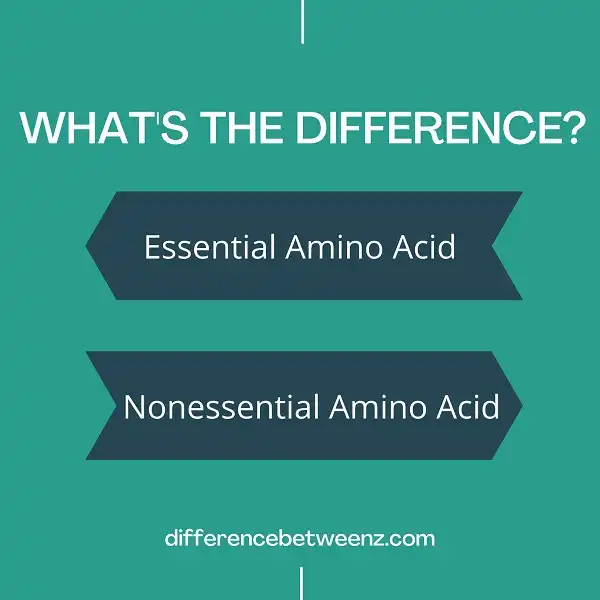Amino acids are the building blocks of protein, and there are two categories of amino acids: essential and nonessential. Essential amino acids cannot be produced by the body, so they must be obtained from food sources. Nonessential amino acids can be produced by the body, so they are not as important to consume from food sources. However, both types of amino acids are necessary for optimal health.
What is Essential Amino Acid?
Amino acids are the building blocks of protein and there are twenty amino acids that occur naturally. Essential amino acids are those that the human body cannot produce itself and must be obtained through diet. Of the twenty amino acids, nine are classed as essential for humans. The essential amino acids are histidine, isoleucine, leucine, lysine, methionine, phenylalanine, threonine, tryptophan and valine. This means that they must be consumed through foods or supplements as the body cannot synthesise them.
Essential amino acids are important for a number of functions in the human body including growth and repair. A lack of essential amino acids can lead to a range of health problems. For example, a lack of lysine can cause anemia, while a lack of tryptophan can lead to depression. It is therefore important to ensure that you include all nine essential amino acids in your diet. Foods that are rich in protein such as meat, fish and dairy products are good sources of essential amino acids. Alternatively, you can take a supplement that contains all nine essential amino acids.
What is Nonessential Amino Acid?
Amino acids are the building blocks of proteins. They are essential for the growth and repair of tissues, and they also play a role in many biochemical processes. Nonessential amino acids are those that can be synthesized by the body, and they are not required in the diet. However, some nonessential amino acids may become essential under certain conditions, such as during periods of rapid growth or during times of stress. The body also uses nonessential amino acids to produce other important compounds, such as glutathione and nitric oxide. As a result, nonessential amino acids play an important role in human health.
Difference between Essential and Nonessential Amino Acid
There are 20 amino acids that are used by cells to synthesize proteins. Of these, 11 can be made in the body and are classified as nonessential amino acids. The remaining nine must be obtained from the diet and are referred to as essential amino acids.
- The terms “essential” and “nonessential” refer to the role of the amino acid in human health. Essential amino acids are required for normal growth and development, and nonessential amino acids are not. However, all 20 amino acids are important for the structure and function of proteins.
- Essential amino acids cannot be synthesized in the body and must be obtained from food sources. The best source of essential amino acids is a complete protein, which contains all of the essential amino acids in the correct ratio for human health.
- Complete protein can be found in meat, poultry, fish, eggs, and dairy products. Non-animal sources of protein such as legumes, grains, and nuts are generally low in one or more of the essential amino acids and are therefore considered incomplete proteins.
Incomplete proteins can be combined to form a complete protein, such as rice and beans, or they can be supplemented with a source of the missing essential amino acid.
Conclusion
- Essential Amino Acids: These are the amino acids that your body cannot make and must come from food. There are 9 essential amino acids: histidine, isoleucine, leucine, lysine, methionine, phenylalanine, threonine, tryptophan, and valine. You can get these amino acids by eating meat or other high-protein foods. Some plant-based proteins also have all of the essential amino acids. Quinoa is a good example of a complete protein source.
- Nonessential Amino Acids: These are the amino acids that your body can make on its own using other nutrients.


